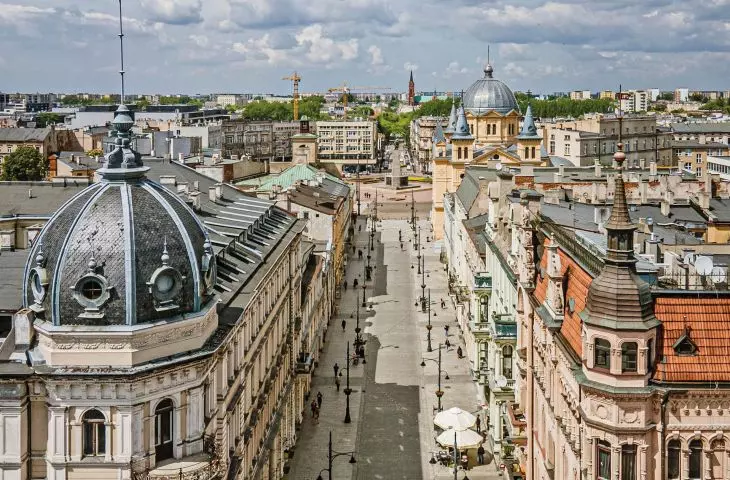Imagine the post-war social landscape of Lodz's space: all the Jews disappeared from it, and there were 200,000 of them here before the war (!). The Germans of Lodz also disappeared. A huge stock of vacant buildings was created, as in other analogous situations and cities after 1945, so it was developed primarily by the population resettled from across the river Bug and migration from the countryside. This is how the modern Lodz community was formed. The workers' city suddenly lacked factory owners. In a previously multicultural city, suddenly almost everyone spoke only Polish. Lodz found itself on the map of a people's republic, where workers were to be given a prominent place in a flattened social hierarchy. That's why the years of the Polish People's Republic were not so bad for Lodz. Nationalized factories invariably provided jobs, and the state decided to invest seriously at last in the development of the workers' city - that is, especially valuable to itself. Thanks to this, higher education institutions finally appeared in Lodz, including the famous "film school."
Just as Wroclaw was transformed by the Afrykarium....
photo: Julian Sojka
The modern identity of Lodz is certainly co-created by two football clubs, dividing the city into two tribes - Widzew and ŁKS. There are socially weighty differences: Widzew is more "proletarian," while LKS is slightly more "elitist." Therefore, the sports rivalry is accompanied by a whole vast pop culture rivalry, the fate of which we can follow on the walls of blocks and tenements. It used to be a vulgar and racist exchange of insults, but over time it has changed its character in a way that is characteristic of Lodz and even symbolic from my perspective. A dozen years ago, someone (an anonymous artist) initiated a dialogue based on irony and well-meaning humor. Very funny inscriptions began to appear on the walls in the style of: "LKS goes on vacation to Zgierz." And the responses to them included: "Widzew crouches while peeing".
...Yes in Lodz the place of must be has become an amazing Orientarium
Photo: Radoslaw Jóźwiak | Fotocrew
I love these texts. "LKS makes tea from dumpling water." "ŁKS uses Nasza Klasa." "Widzew drives a TICO." "RTS is slimming down." "RTS went for its wits and didn't come back." "Widzew sleeps with parents". "LKS is beating itself up with thoughts". "ŁKS studies in Pabianice". "Widzew snores." "ŁKS thinks Black Metal is Tajger's can." "Widzew gets a beating for communion". "LKS thinks IVF is a pizzeria". "RTS thinks Paralympics is locomotive racing." "LKS has halos after mushrooms." Leaving aside the issue of reprehensible greasing on walls (especially historic ones) and the general disgusting of urban space with wild graffiti, this form of social communication is some kind of signal. That it is possible to turn something hideous with a sense of humor into something quite the opposite. And such a change the whole of Lodz is undergoing. The city - formerly shrouded in smog, blackened by factory fumes, aged by decades of communism, sprinkled like dandruff with plaster from unrenovated tenements - entered the 21st century ugly, a bit on its knees.
...That's how the must be place in Lodz became the amazing Orientarium
photo: Paweł Łacheta
Because we should also remember the worst times for the city. The catastrophe occurred in the 1990s. Lodz's industry collapsed rapidly. This was influenced not only by the change of the system - for globally the production of textiles and clothing moved to Asia. This was a very painful experience for Lodz, not least because of one dominant industrial specialization. The lack of diversification of industries caused the city to decline, and it began to shrink demographically, giving second place to the dynamically growing Kraków. The incumbent mayor Jerzy Kropiwnicki, who ruled Lodz until 2010 and, to put it mildly, did not do well in this role, did not help Lodz either. These were not easy times for the city.
Geyer's White Factory - this is where the first steam engine in Lodz was launched, today it houses the Central Museum of Textiles
© City Hall of Lodz









































































